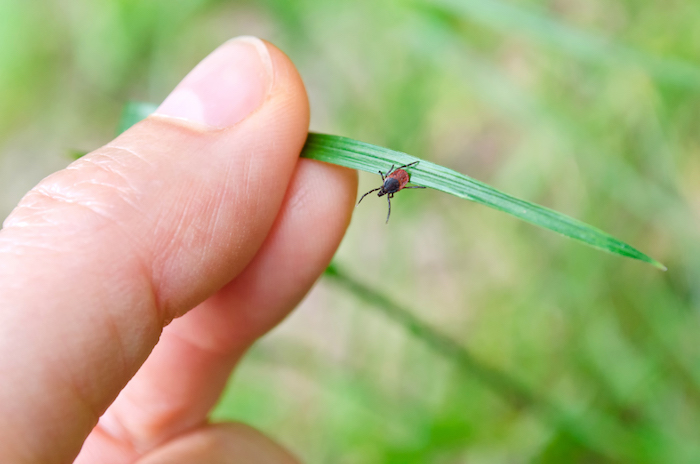View from the Garden: Help Fight Back Against Ticks This Season

I hope everyone reading this is aware of the increased tick population this season and the resulting possibility of contracting a tick-borne disease. It’s imperative that we all take measures to limit our exposure to ticks and that we seek medical help if we experience symptoms, which include a rash around a tick bite, a full body rash, flu-like symptoms (joint pain, headache, nausea), fatigue and high fever.
Here are some scary facts: There are three kinds of ticks in this area and at least six diseases we can get from ticks. Two of the diseases can kill you if left untreated, and one can give you an allergy to meat! Lyme disease can be caused by different organisms, each possibly requiring its own tests and vaccines. Bacterial strains of tick-borne diseases vary across different regions of the country. There’s no vaccine and no standard test that can indicate a positive diagnosis. There are tests to identify antibodies to the bacteria, but none that identify the presence of the bacteria itself. To make matters worse, researchers do not have enough samples from people with confirmed Lyme disease to help create tests or vaccines. To remedy this, The Bay Area Lyme Foundation in Portola Valley, California has created the Lyme Disease Biobank, the first and only such program that collects blood and urine samples from multiple areas across the country and then distributes them to laboratories in the hopes of accelerating research into the understanding, diagnosis and treatment of tick–borne diseases.
Dr. George Dempsey of East Hampton has been collecting blood samples since 2014. Anyone who has been treated for Lyme disease for less than 48 hours can call 631-324-9200 to inquire about participation in the Biobank program. These samples are vital to researchers.
I’ve been working in gardens for over 20 years. The possibility of getting a tick-borne disease has increased each year. As more vacant land is developed, deer have fewer places to live, putting them closer to us. When we have a season with abundant acorns like last fall, carriers of deer ticks, such as white-footed mice, and therefore ticks, multiply. Given the increasing development in our area and our inability to manage the deer population, we can expect the problem of tick-borne diseases to keep getting worse until researchers, with samples from organizations like the Biobank, can find ways of diagnosing and treating it.
Until that happens, inform yourselves and take appropriate actions. You might be able to modify your landscape to include fewer damp, leafy areas and/or spray it for ticks. At the very least, use tick repellants and, most importantly, check your children and pets each time you’ve been outdoors.
If you experience symptoms of what you think might be a tick-borne disease, go to the doctor. Ask how a diagnosis is made, but remember there’s no absolute diagnostic test. If the doctor thinks you might have a tick-borne disease, you should be given a prescription for an antibiotic for three weeks and you must complete the entire treatment.
The East End affords many enjoyable outdoor activities. Don’t let your experience be spoiled. Realize that contracting tick–borne diseases is possible, and take actions to protect yourself and your family.
Jeanelle Myers is a professional gardener, landscaper and consultant. For gardening discussion you can call her at 631-434-5067. jeanellemyersfinegardening.com



